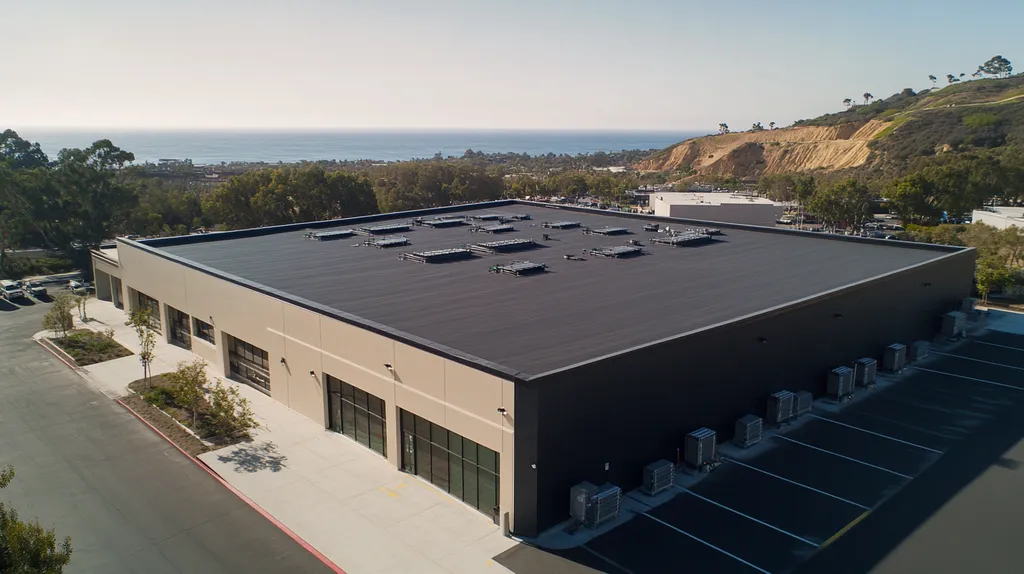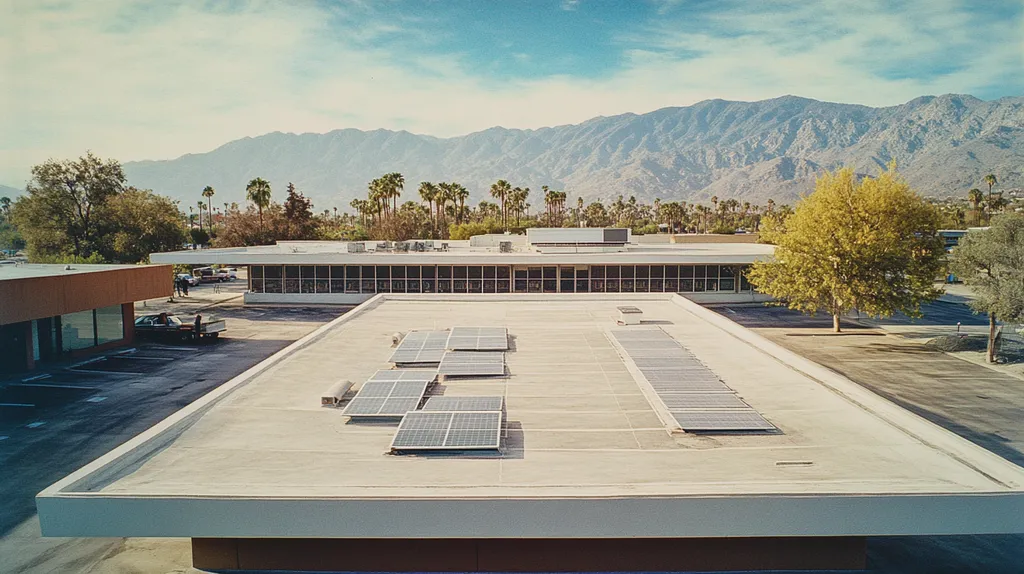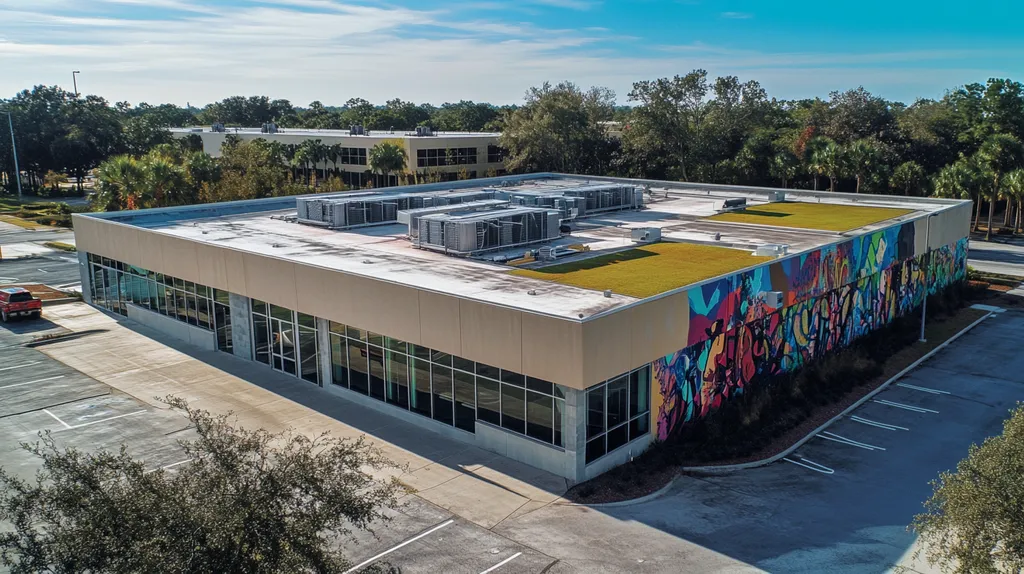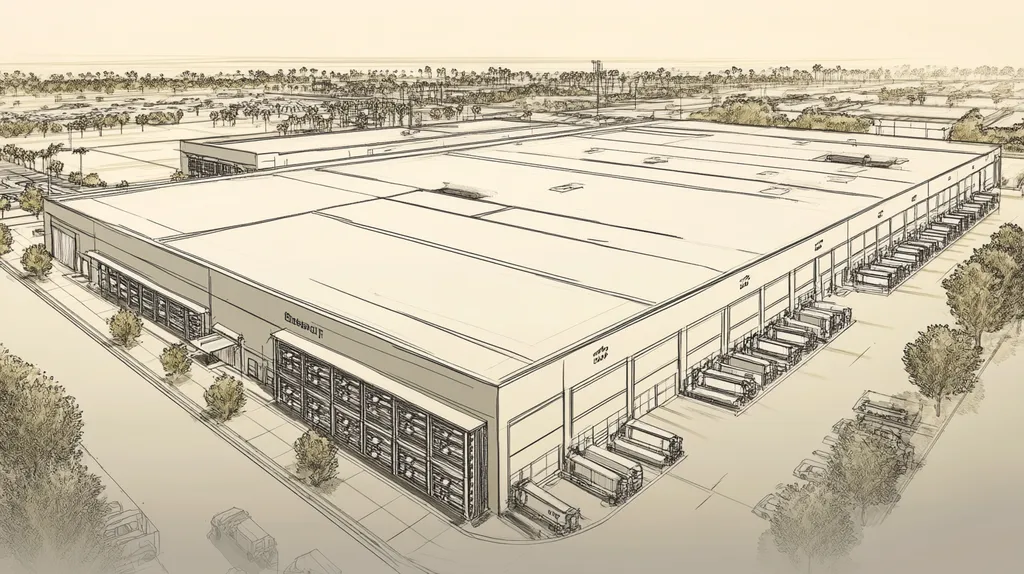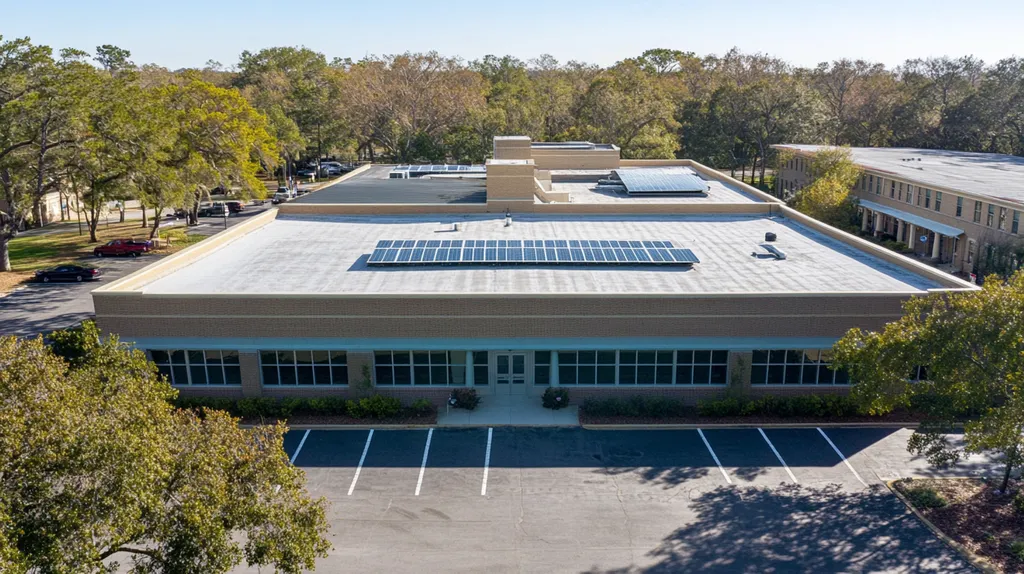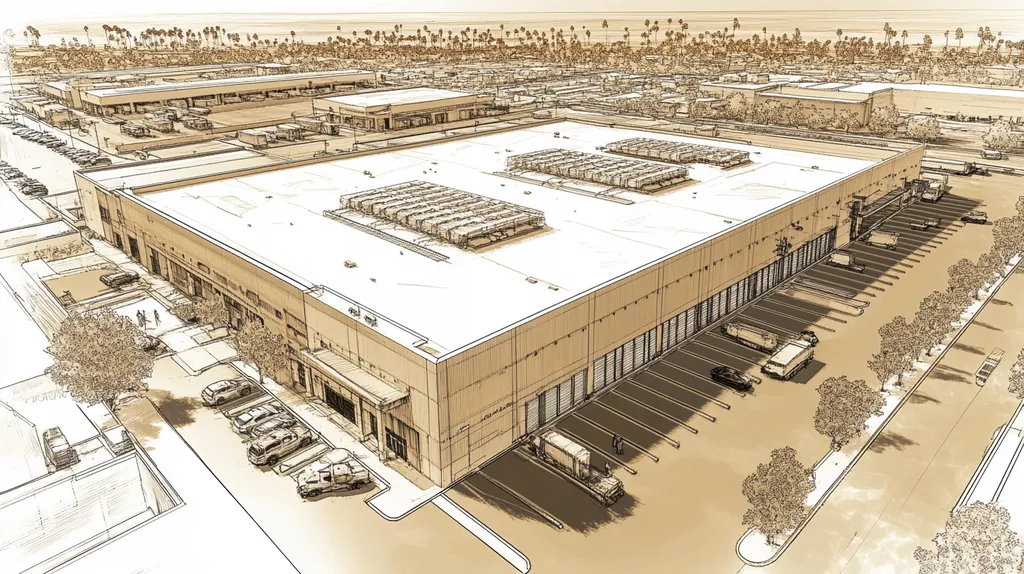Welcome to today’s Battle Royale featuring two roofing heavyweights: “Reflective Coatings” in the east corner versus “Green Roofs” in the west!
Tonight’s showdown pits these contenders against each other across six punishing rounds designed to test every aspect of their performance for Energy-Efficient Cooling Options for Industrial Roofs.
At stake? Millions in potential costs, decades of building protection, and the critical performance demands of modern commercial and industrial facilities.
Our professional judging panel will evaluate each round on technical merit, real-world performance, and value delivery. After all six rounds, we’ll declare our ultimate champion.
Ladies and gentlemen, facility managers and building owners… it’s time to rumble!
ROUND 1: INITIAL COSTS & INSTALLATION
In today’s industrial landscape, rising energy costs and sustainability mandates are pushing facility managers to make critical decisions about roof cooling solutions. With summer temperatures reaching record highs, the choice between reflective coatings and green roofs can significantly impact both immediate budgets and long-term operating costs.
Material Expenses
Cool roofs can reduce peak summer temperatures by up to 60°F compared to conventional roofs, offering substantial energy savings. These reflective coatings typically cost $0.75-2.50 per square foot for materials, making them an accessible option for most facilities.
Green roof materials represent a significantly higher investment, ranging from $10-30 per square foot. This includes specialized growing medium, root barriers, drainage systems, and carefully selected vegetation suited to local climate conditions.
While both options deliver energy efficiency benefits, reflective coatings provide an average yearly net savings of almost 50 cents per square foot. (source: Facility Executive)
ADVANTAGE: Reflective Coatings
Installation Complexity
Reflective coating installation follows a straightforward process of surface preparation and application. Most projects require minimal specialized equipment and can be completed by experienced roofing crews without additional training.
Green roof installation demands extensive structural analysis, waterproofing expertise, and specialized knowledge of vegetation systems. The process requires multiple contractors and careful coordination between roofing specialists and landscaping professionals.
The complexity difference significantly impacts both labor costs and project risk factors. Reflective coatings present fewer variables and potential complications during installation.
ADVANTAGE: Reflective Coatings
Project Timeline
Most reflective coating applications can be completed within 2-5 days, depending on roof size and weather conditions. This quick turnaround minimizes disruption to facility operations and allows for rapid implementation of energy-saving benefits.
Green roof installations typically require 2-4 weeks for basic systems and can extend to several months for more complex designs. This timeline includes structural modifications, waterproofing installation, and vegetation establishment periods.
The extended installation period for green roofs can impact facility operations and delay the realization of energy-saving benefits. Reflective coatings offer a clear advantage in project completion speed.
ADVANTAGE: Reflective Coatings
ROUND 1 WINNER: Reflective Coatings
ROUND 2: DURABILITY & LIFESPAN
Industrial roofing investments demand careful consideration of long-term performance, not just initial costs. With replacement costs for commercial roofs averaging $8-15 per square foot, the durability and lifespan of cooling solutions directly impact facility budgets for decades. Understanding how reflective coatings and green roofs perform over time is crucial for making informed decisions that protect both buildings and bottom lines.
Weather Resistance
Reflective coatings create a protective barrier that shields the underlying roof membrane from UV radiation and thermal stress. These coatings can be applied to various roofing substrates including TPO, PVC, metal, and modified asphalt systems, offering enhanced durability across multiple applications.
When properly maintained, cool roof coatings maintain 80-90% solar reflectance and can keep roof surfaces up to 60°F cooler than conventional roofs during peak summer conditions. This temperature reduction significantly extends the life of the roofing system. (source: Facility Executive)
Green roofs provide superior protection against extreme weather through multiple layers of growing medium and vegetation. The natural insulation buffers against temperature fluctuations and physical impacts, while root systems help maintain structural integrity.
ADVANTAGE: Green Roofs
Maintenance Requirements
Reflective coatings need regular inspections and periodic cleaning to maintain their reflective properties. Surface contamination from dirt, debris, and atmospheric pollutants can reduce effectiveness over time.
Recoating is typically required every 5-10 years, depending on environmental conditions and wear patterns. This process is relatively straightforward but must be performed before significant degradation occurs.
Green roofs require more intensive ongoing maintenance, including vegetation management, irrigation system upkeep, and structural inspections. However, the living components actually protect the waterproofing membrane, potentially doubling its functional lifespan.
ADVANTAGE: Tie
System Longevity
Reflective coatings typically last 10-15 years before requiring complete replacement. Environmental factors, foot traffic, and maintenance quality significantly impact their durability.
When properly installed and maintained, green roof systems can last 40-50 years. The multiple protective layers and natural thermal regulation contribute to this extended lifespan.
The substantial difference in service life makes green roofs the clear winner for long-term durability, despite higher maintenance requirements.
ADVANTAGE: Green Roofs
ROUND 2 WINNER: Green Roofs
ROUND 3: PERFORMANCE FACTORS
As energy costs continue to surge and climate regulations tighten, industrial facility managers face mounting pressure to optimize roof cooling performance. The right choice between reflective coatings and green roofs can mean the difference between achieving sustainability targets or falling short, while directly impacting monthly operating expenses by thousands of dollars.
Energy Efficiency
Energy efficiency stands as the primary performance metric for industrial roof cooling solutions. Modern facilities must balance immediate cooling needs with long-term energy management goals.
Reflective coatings excel at direct solar heat reduction, creating an immediate impact on cooling costs. When properly installed, these coatings can maintain 80-90% solar reflectance and keep roof surfaces up to 60°F cooler than conventional roofs during peak summer conditions. (source: Facility Executive)
Green roofs provide passive cooling through natural evapotranspiration and thermal mass. While effective, their cooling performance can vary significantly based on vegetation health and environmental conditions.
ADVANTAGE: Reflective Coatings
Temperature Control
Consistent temperature control across large industrial spaces directly impacts both worker comfort and operational efficiency. Variations of just a few degrees can significantly affect productivity and equipment performance.
Reflective coatings deliver predictable temperature reduction across the entire roof surface. Their performance remains stable throughout the day, providing reliable cooling during peak heat periods.
Green roofs can create temperature variations due to uneven plant growth or moisture distribution. While they offer excellent insulation value, their cooling effect may not be uniform across the roof surface.
ADVANTAGE: Reflective Coatings
Environmental Impact
Environmental performance has become a critical factor in industrial roofing decisions. Both options contribute to reducing urban heat island effects and lowering carbon emissions.
Reflective coatings primarily impact environmental performance through energy reduction. While effective, they offer limited additional environmental benefits beyond heat reflection and energy savings.
Green roofs provide multiple environmental advantages, including stormwater management, air quality improvement, and biodiversity support. Their living systems create robust environmental benefits that extend beyond simple temperature control.
ADVANTAGE: Green Roofs
ROUND 3 WINNER: Reflective Coatings
ROUND 4: MAINTENANCE REQUIREMENTS
In today’s industrial environment, proper roof maintenance can mean the difference between optimal performance and system failure. With cooling costs representing up to 15% of building energy consumption, maintaining the efficiency of rooftop cooling solutions directly impacts operational budgets. Understanding the maintenance demands of reflective coatings versus green roofs is crucial for long-term facility planning.
Regular Inspection Requirements
Reflective coatings require relatively simple annual inspections focusing on surface integrity and reflectivity levels. These inspections can typically be completed in a single day by standard maintenance crews.
Most issues with reflective coatings can be identified through visual examination and basic testing. Early detection of problems like surface wear or coating separation allows for quick, cost-effective repairs.
Green roofs demand monthly inspections covering multiple systems including drainage, vegetation health, and structural integrity. These comprehensive evaluations require specialized knowledge and often necessitate professional service contracts.
ADVANTAGE: Reflective Coatings
Cleaning and Repairs
By reflecting and blocking more sunlight, cool roofs reduce solar heat absorption and minimize thermal stress damage. Regular cleaning helps maintain optimal reflectivity and extend system lifespan. (source: SPI Coatings)
Most reflective coating repairs involve simple patch applications or recoating of damaged areas. These repairs can usually be completed quickly with minimal disruption to facility operations.
Green roof maintenance includes regular weeding, plant replacement, and irrigation system repairs. These tasks require specialized equipment and expertise, often leading to higher maintenance costs and longer repair times.
ADVANTAGE: Reflective Coatings
Long-term Care Requirements
Reflective coatings typically need complete reapplication every 7-10 years, depending on environmental conditions. This process is straightforward but requires careful timing to maintain continuous protection.
The recoating process can usually be completed within a few days, minimizing facility disruption. Modern coating systems offer improved durability and easier reapplication compared to earlier technologies.
Green roofs require constant attention to maintain proper vegetation coverage and system functionality. While individual components may last longer, the ongoing care demands create higher lifetime maintenance costs.
ADVANTAGE: Reflective Coatings
ROUND 4 WINNER: Reflective Coatings
ROUND 5: SUSTAINABILITY CREDENTIALS
As environmental regulations tighten and stakeholder expectations evolve, industrial facilities face mounting pressure to demonstrate meaningful sustainability credentials. The choice between reflective coatings and green roofs extends far beyond simple energy savings, impacting everything from carbon footprints to local ecosystem health. Today’s facility managers must weigh these options carefully to meet both current requirements and future environmental mandates.
Carbon Footprint
The overall carbon impact of roofing solutions has become a critical metric for industrial facilities targeting net-zero emissions. This includes both the immediate installation impact and long-term operational effects on building carbon emissions.
Reflective coatings demonstrate excellent carbon reduction through energy savings, requiring minimal resources during installation. Their lightweight nature and simple application process result in lower transportation emissions and reduced installation equipment needs.
Green roofs actively sequester carbon through vegetation growth while providing substantial energy savings. The living components continuously absorb CO2 and release oxygen, creating an active carbon sink that goes beyond passive energy reduction.
ADVANTAGE: Green Roofs
Environmental Impact
Modern industrial facilities must consider their broader environmental footprint, including effects on local ecosystems and urban infrastructure. This extends to issues like stormwater management, air quality, and habitat creation.
Reflective coatings primarily influence environmental conditions through temperature reduction and energy savings. While effective for these specific metrics, they offer limited additional environmental benefits.
Green roofs create diverse environmental advantages including stormwater retention, air purification, and wildlife habitat support. Their living systems help restore natural processes to urban environments while reducing infrastructure strain.
ADVANTAGE: Green Roofs
Resource Efficiency
The efficient use of resources throughout a roofing system’s lifecycle significantly impacts its sustainability profile. This includes installation materials, maintenance requirements, and end-of-life considerations.
Reflective coatings excel in material efficiency, requiring minimal resources for both installation and maintenance. Their simple composition and application process reduce waste and simplify eventual replacement.
Green roofs demand more intensive resource investment initially but create self-sustaining ecosystems that enhance resource efficiency over time. Their natural processes support building performance while minimizing the need for artificial inputs.
ADVANTAGE: Green Roofs
ROUND 5 WINNER: GREEN ROOFS
ROUND 6: SPECIALIZED APPLICATIONS
Industrial facilities face unique cooling challenges that demand specialized roofing solutions. With cooling costs representing up to 30% of energy expenses in large industrial buildings, choosing the right specialized application can mean hundreds of thousands in annual savings or losses.
Both reflective coatings and green roofs offer distinct advantages for specialized industrial applications, but their effectiveness varies significantly based on specific facility requirements and environmental conditions.
High-Heat Industrial Environments
Manufacturing facilities, data centers, and processing plants generate extreme internal heat loads that place unique demands on roofing systems. These environments require solutions that can handle both external solar gain and internal heat migration.
Reflective coatings provide immediate and measurable temperature reduction, especially beneficial for facilities with high internal heat generation. Their ability to maintain consistent performance under extreme conditions makes them particularly valuable for manufacturing and processing environments.
Green roofs, while effective at general temperature regulation, may struggle in extremely high-heat environments where consistent performance is critical. Their cooling efficiency can vary with vegetation health and weather conditions.
ADVANTAGE: Reflective Coatings
Load-Bearing Requirements
Industrial facilities must carefully consider structural capacity when selecting specialized roofing applications. Many older buildings have limited additional load-bearing capacity, restricting their cooling system options.
Reflective coatings add minimal weight to existing structures, typically less than 0.5 pounds per square foot. This makes them ideal for buildings with limited structural capacity or those requiring minimal reinforcement.
Green roofs can add 20-40 pounds per square foot when saturated, often requiring significant structural modifications. This weight limitation can make them impractical for many existing industrial buildings.
ADVANTAGE: Reflective Coatings
Environmental Compliance Zones
Industrial facilities increasingly operate under strict environmental regulations, particularly in urban areas with stringent stormwater management and emissions requirements. The right roofing solution can help meet or exceed these compliance standards.
Reflective coatings primarily address heat island effect and energy consumption requirements. While effective for these specific metrics, they offer limited benefits for broader environmental compliance needs.
Green roofs excel in meeting multiple environmental regulations simultaneously, including stormwater management, air quality improvement, and biodiversity requirements. Their natural systems provide documented compliance benefits across various environmental categories.
ADVANTAGE: Green Roofs
ROUND 6 WINNER: Reflective Coatings
AND THE WINNER IS…
After six punishing rounds of technical evaluation, with victories trading back and forth like heavyweight combinations, we have our verdict!
With a commanding 4-2 victory on our scorecard, REFLECTIVE COATINGS emerges as the undisputed champion of industrial roof cooling solutions! This technical powerhouse dominated in cost-effectiveness, maintenance simplicity, and specialized applications, proving itself a formidable defender against rising energy costs.
But don’t count Green Roofs out of the fight! This eco-warrior proved its worth by delivering knockout performances in durability and sustainability. For facilities requiring maximum environmental credentials or looking to create lasting urban ecosystem benefits, Green Roofs remains a compelling contender.
*Important Ringside Notice*
Every building brings its own unique requirements into the ring. Local climate conditions, structural capabilities, and specific facility needs can dramatically impact performance outcomes. This analysis provides general guidance but cannot account for all variables. Property owners should always consult with qualified roofing professionals who can evaluate their specific situation before making final decisions.
Remember, champions: In the high-stakes arena of industrial roofing, victory doesn’t go to the flashiest contender – it goes to the solution that best matches your facility’s specific requirements and long-term performance demands. Choose your fighter wisely!
FREQUENTLY ASKED QUESTIONS
Q. What are the initial costs for a commercial roof cooling system?
A. The initial costs vary between reflective coatings and green roofs. Reflective coatings typically range from $0.75 to $2.50 per square foot for materials. In contrast, green roofs can average between $10 to $30 per square foot due to the specialized materials and installation required.
Q. How does the durability of reflective coatings compare to an industrial roof?
A. Reflective coatings typically last between 10 to 15 years, while properly installed green roofs can last significantly longer, often 40 to 50 years. Proper maintenance for both systems can enhance their longevity and performance over time.
Q. Which energy-efficient cooling option performs better for an industrial roof?
A. Reflective coatings excel in immediate solar heat reduction, maintaining higher reflectivity. However, green roofs provide passive cooling through plant evapotranspiration. Depending on environmental conditions, each has distinct advantages in energy performance.
Q. What maintenance does a commercial roof require for optimal performance?
A. Reflective coatings require annual inspections and periodic cleaning to maintain reflectivity. Conversely, green roofs need monthly inspections and regular maintenance for vegetation and drainage. Understanding these demands helps in planning budgets and resources accordingly.
Q. Which option has a lower carbon footprint for industrial roofs?
A. Reflective coatings contribute to carbon reduction through energy savings with a minimal resource requirement. On the other hand, green roofs actively sequester carbon and offer numerous ecological benefits, making them a robust choice in carbon footprint reduction.
Q. How do specialized applications differ for commercial roofs?
A. Reflective coatings are ideal for high-heat environments due to their immediate cooling effects. In contrast, green roofs may struggle under intense heat loads but excel in urban compliance with environmental regulations, making them suitable for different specialized needs.
Q. What impact do these cooling solutions have on facility operations?
A. Choosing the right cooling solution significantly affects energy costs and productivity. Reflective coatings offer rapid installation and quick energy savings, while green roofs provide long-term benefits but require longer setup times, potentially impacting short-term operations.

